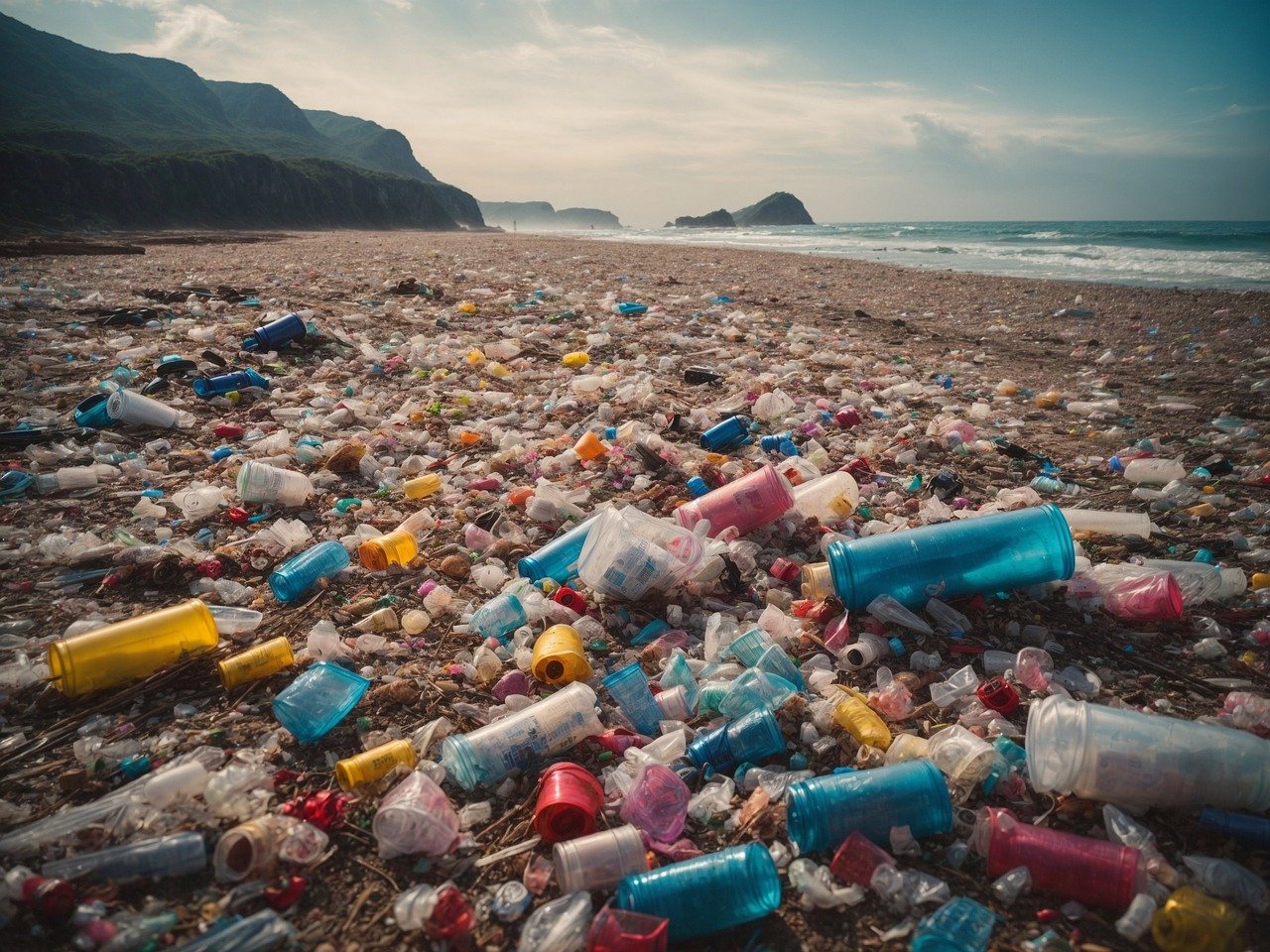As we become more and more conscious of the environment, so does our understanding that many materials we consider waste can be detrimental to it.
These materials range from your everyday plastics to your sturdy metals. Rather than discarding them, they can simply be recycled or repurposed and put to good use.
Here, we discuss 7 of these eco-harmful materials and explore various ways they can be reused and recycled.
1. Plastic:
Because it is widely used on a daily basis, plastic remains one of the most prevalent environmental pollutants. Single-use plastics like bottles, straws, and packaging often end up in landfills or oceans, taking years to decompose. This poses a great risk to the environment, as it significantly affects the soil as well as the marine ecosystem. However, plastic is highly recyclable. Different types of plastic can be melted down and reformed into new products like (soap bottles, traffic cones, etc., reducing the need for producing new plastic. Additionally, repurposing plastic for crafts, home projects, or even building materials can extend its life cycle and decrease its environmental impact.
2. Nylon:
Nylon, a synthetic polymer widely used in textiles and manufacturing, is another eco-harmful material that poses significant environmental risks. Its production is energy-intensive and petroleum-reliant, contributing to greenhouse gas emissions and resource depletion. Moreover, nylon is non-biodegradable, meaning it can persist in the environment for hundreds of years. Discarded nylon products, such as nylon bags, fishing nets, or clothing, can cause severe pollution, particularly in oceans where they contribute to microplastic pollution and pose a threat to marine life. However, nylon can be recycled into new products, such as regenerated textiles, bags, and even fashion accessories. By choosing recycled nylon products or sustainable alternatives like bio-based nylons, consumers can help minimize the ecological footprint of this material.
3. Electronic Waste (E-Waste):
E-waste, which includes discarded electronics like phones, computers, and batteries, is a significant source of pollution due to the toxic substances they contain. For instance, batteries contain substances such as lithium, cadmium, or lead that can leak into the environment, contaminating soil and water. Therefore, recycling e-waste is very crucial. Also, recycling e-waste allows for the recovery of valuable materials like copper, silver, and plastic, reducing the need for new raw materials. Moreover, many components of e-waste can be refurbished and reused in new devices, further extending their lives and reducing environmental harm.
4. Paper and Cardboard:
While paper and cardboard are biodegradable and less harmful than the others on our list, their excessive use and disposal contribute significantly to deforestation and landfill waste. Both materials can be recycled multiple times, reducing the need for new raw materials. For instance, paper can be reused to produce new products like tissues, pencils, egg cartons, etc., reducing the need for raw pulp and thereby saving trees. Similarly, cardboard can be repurposed for packaging, crafts, or even as a compost material, providing an eco-friendly alternative to disposal.
5. Rubber:
Rubber, particularly in the form of tires, is another eco-harmful material that poses a significant waste management challenge. Discarded tires take up valuable landfill space, and if burned, they can release toxic chemicals into the environment. They can, however, be recycled into new products, such as playground surfaces, sports tracks, and even new tires. Additionally, old tires can be repurposed for creative uses, such as garden planters, furniture, or construction materials.
6. Aluminum:
Aluminum is a common material found in cans, foil, and various packaging. Because aluminum production is energy-intensive and has a significant environmental impact, it is also an environmental threat. It is, however, also highly recyclable. Interestingly, recycling aluminum saves more than 90% of the energy required to manufacture new aluminum from raw materials. Additionally, recycled aluminum can be used in the production of new cans, automotive parts, or construction materials, making it one of the most sustainable materials when properly recycled.
7. Metal:
Metals like steel, copper, and iron are essential in construction, manufacturing, and electronics. However, their extraction and production have significant environmental impacts, including habitat destruction, water pollution, and high energy consumption. Similarly, discarded metal products can contribute to waste in landfills, where they may leach toxic chemicals into the soil and water. Yet, metals are highly recyclable and can be reused multiple times without losing their properties. Recycling metals saves significant amounts of energy compared to producing them from raw ores. Recycled metals like shipping containers, oil drums, etc. can therefore be used to create construction materials, electronics, furniture, and more. Thus reducing the need for mining and conserving natural resources.
Essentially, reusing and recycling these eco-harmful materials is not just an option but a necessity in our fight against environmental degradation. By extending the life cycle of these materials, we can significantly reduce the need for new raw materials, conserve energy, and minimize waste. Similarly, as consumers, making informed choices about how we dispose of or repurpose these materials can significantly impact the health of our planet. Therefore, we must make conscious efforts to ensure the proper disposal or reuse of any of these eco-harmful materials.
To check out more enlightening news and updates, visit our blog here. Discover all our products and services here and request a quote here to get started. You can also visit our newly launched YouTube channel here to check out more exciting content. And follow us on Instagram @redcityco for any important announcements.What are your thoughts on these 7 eco-harmful materials that can be reused and recycled? Comment below.


I’m amazed, I have to admit. Seldom do I come across a blg that’s both equally educative and entertaining, and let me tell you, you’ve hit the nail on the head.
The issue iis an issue that too few folks aare speaking intelligently about.
I’m very happy that I found this in my hunt for
something concerning this.